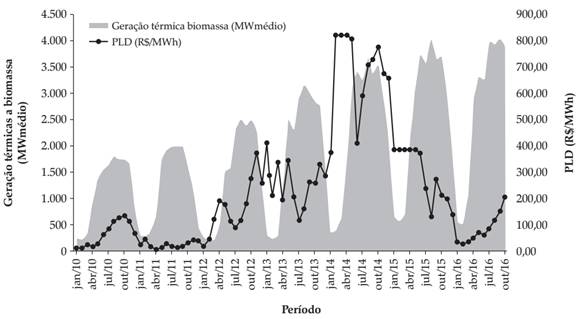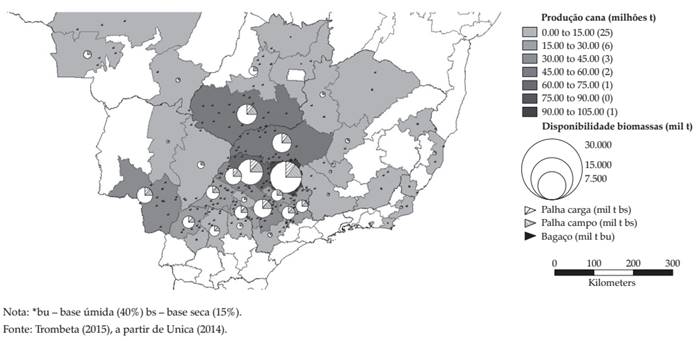Abstract:
The thermoelectric power, in particular, produced by sugarcane biomass, shows up as a sustainable alternative to promote energy security. Thus, the study aims to identify qualitatively and quantitatively the potential and availability of biomass from sugarcane, bagasse and straw for energy use in cogeneration operation and as raw material for cellulosic ethanol production in South-Center region. In order to do this, a data collection was conducted for the 2013/14 season with 77 sugarcane mills to develop agronomic indicators (measurement of bagasse and straw sugarcane supply), technological indicators (industry cogeneration potential) and market indicators (electricity prices and participation in different marketing environments). In general, agronomic indicators for a typical sugarcane mill in Brazil have medium crush of 3 million tons of sugarcane, 8.1% of plant impurity and 88% of mechanized harvesting. Technological indicators in Brazil showed that almost 60% of sampled boiler had a low vapor pressure technology (until 48 bar) and 69% of sampled turbogenerator were simple counter type. As for the market indicators, for energy exported mills, the share was 53% in the regulated market at an average price of 191.49 BRL/MWh.
Key-words:
Bagasse; sugarcane straw; indicators; cogeneration; cellulosic ethanol.

 Thumbnail
Thumbnail
 Thumbnail
Thumbnail
 Thumbnail
Thumbnail
 Thumbnail
Thumbnail
 Thumbnail
Thumbnail
 Thumbnail
Thumbnail
 Thumbnail
Thumbnail
 Fonte:
Fonte:  Fonte:
Fonte:  Nota: *bu - base úmida (40%) bs - base seca (15%). Fonte:
Nota: *bu - base úmida (40%) bs - base seca (15%). Fonte: 
 Fonte:
Fonte:  Fonte:
Fonte:  Fonte:
Fonte: